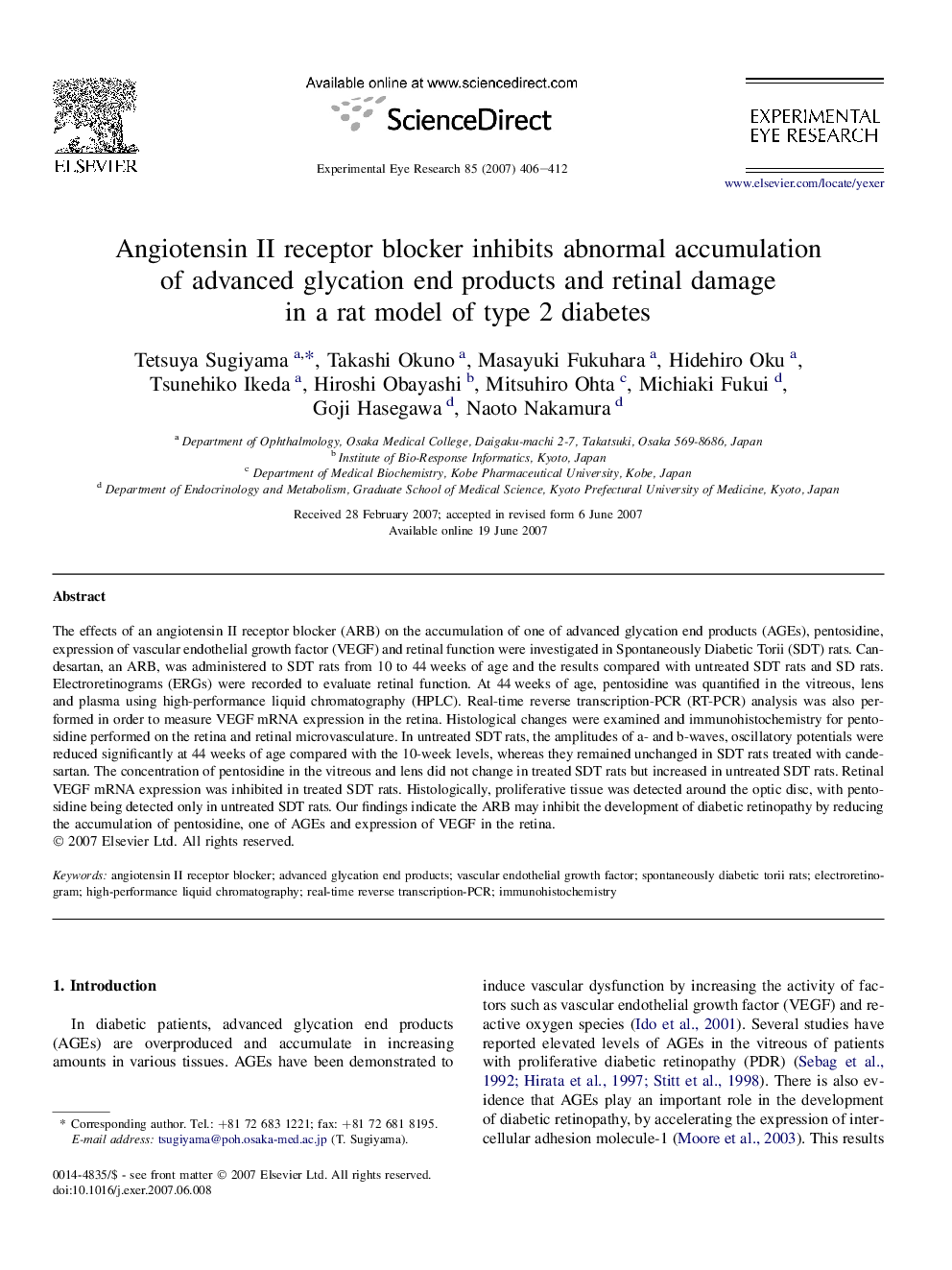| Article ID | Journal | Published Year | Pages | File Type |
|---|---|---|---|---|
| 4012321 | Experimental Eye Research | 2007 | 7 Pages |
The effects of an angiotensin II receptor blocker (ARB) on the accumulation of one of advanced glycation end products (AGEs), pentosidine, expression of vascular endothelial growth factor (VEGF) and retinal function were investigated in Spontaneously Diabetic Torii (SDT) rats. Candesartan, an ARB, was administered to SDT rats from 10 to 44 weeks of age and the results compared with untreated SDT rats and SD rats. Electroretinograms (ERGs) were recorded to evaluate retinal function. At 44 weeks of age, pentosidine was quantified in the vitreous, lens and plasma using high-performance liquid chromatography (HPLC). Real-time reverse transcription-PCR (RT-PCR) analysis was also performed in order to measure VEGF mRNA expression in the retina. Histological changes were examined and immunohistochemistry for pentosidine performed on the retina and retinal microvasculature. In untreated SDT rats, the amplitudes of a- and b-waves, oscillatory potentials were reduced significantly at 44 weeks of age compared with the 10-week levels, whereas they remained unchanged in SDT rats treated with candesartan. The concentration of pentosidine in the vitreous and lens did not change in treated SDT rats but increased in untreated SDT rats. Retinal VEGF mRNA expression was inhibited in treated SDT rats. Histologically, proliferative tissue was detected around the optic disc, with pentosidine being detected only in untreated SDT rats. Our findings indicate the ARB may inhibit the development of diabetic retinopathy by reducing the accumulation of pentosidine, one of AGEs and expression of VEGF in the retina.
